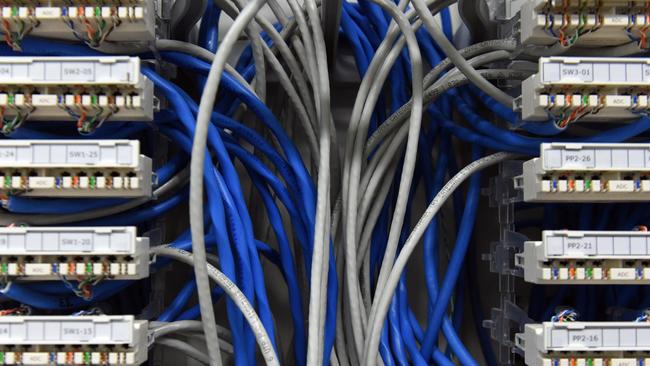How Blackstone became an ‘AirTrunk believer’
The New York giant was dabbling with some sheds with ‘some power on the side’ but two lessons paved the way for its bumper acquisition.

Behind the scenes at this week’s Citi Australia investment conference, there were two companies swamped with requests from fund managers for private meetings: Goodman and NextDC.
It’s another sign of the intense heat building around data centre operators, with billions of dollars being channelled into the once low-profile sector. Data centres are being built as fast as they can to house the vast amount of computing horsepower needed to drive the AI revolution.
The recent buyout of Australia’s pan-Asian data centre operator Airtrunk by New York funds giant Blackstone for a stunning $24bn marked one of the biggest acquisitions in Australia this year. To get a sense of the scale of growth, just five years ago AirTrunk changed hands for $3bn.

Big super is another racing to directly invest in data centres.
AustralianSuper has just outlined a $2.2bn commitments into DataBank, forming the bulk of the US data centre operator’s fundraising. This takes AusSuper’s private investments in the sector to almost $5bn.
Blackstone’s Australia boss Chris Tynan told the Citi Conference in Sydney it took several years for the $1 trillion Blackstone to move into data centres. However, with AirTrunk, the New York giant is all in.
When AirTrunk first went to the market seeking a major funding round five years ago, Blackstone participated in the bidding process but was lukewarm at best what was on offer. Macquarie Group emerged as the most-hungry for the business at the time.
“The reason why was really that we were struggling with what it was, was it real estate? Was it infrastructure? Was it something else? The replacement cost didn’t make sense in a real estate context,” Tynan told the conference.
Blackstone had been delivering powered warehouses for Amazon in the US and was increasingly comfortable doing “sheds … with some power on the side”.
The thing that made Blackstone data centre “believers” were two things, Tynan says. It acquired a US listed company called QTS for about $US10bn. This was essentially a US version of Australia’s listed data centre player NextDC.
At the time, QTS had a good land holdings, but was predominantly doing medium and corporate business cloud offerings rather than the hyperscale buildings demanded by the technology majors. Even so,

Blackstone felt the share price at the time wasn’t reflecting the potential of the business.
Then the second thing that changed Blackstone’s thinking, through QTS a step change in the scale of the contracts being signed by customers was underway.
“It started with the cloud and in the US in particular, it has been supercharged with these AI training facilities,” Tynan says.
“So you then come back around to the second time AirTrunk was sold, and what we saw, and it was very much a business that had all the tailwinds that we were experiencing elsewhere in the world, but had a unique footprint in Asia”.
The decision to really go after AirTrunk when Macquarie put its stake on the market was the question inside Blackstone of whether the asset manager could build what was on offer itself.
“We’re smart people. We’re well capitalised. We think we know what data centres are now after the QTS experience, could we go and replicate what (AirTrunk founder) Robin Khuda built?”
“Where we got to for that question was ‘probably not’, and certainly not in a time frame that will allow you to access the growth that we’re seeing”.
Tynan admits he was taken by surprise by Khuda’s claim the day after Blackstone signed the deal that AirTrunk could one day be a “$100bn business”. But Tynan says he went and reflected of the size of the prize on offer, with demand for data through Asia surging.
“It’s not crazy to believe that you can actually capture the market share that gets you to a very, very significant business size, and whether that’s $100bn whether that’s just doubling it to 50, I mean, or whether that’s 200 that will remain to be seen. But we certainly see the demand, and we certainly see the execution capability”.
johnstone@theaustralian.com.au






To join the conversation, please log in. Don't have an account? Register
Join the conversation, you are commenting as Logout